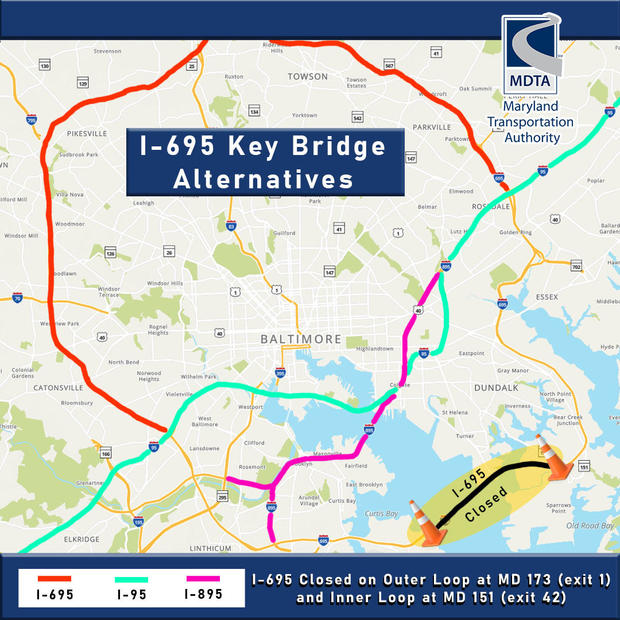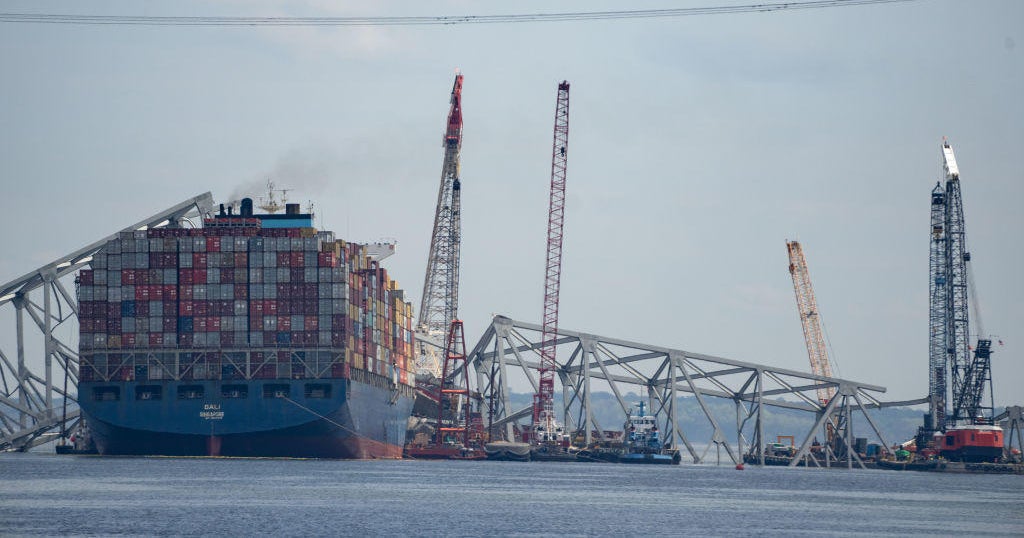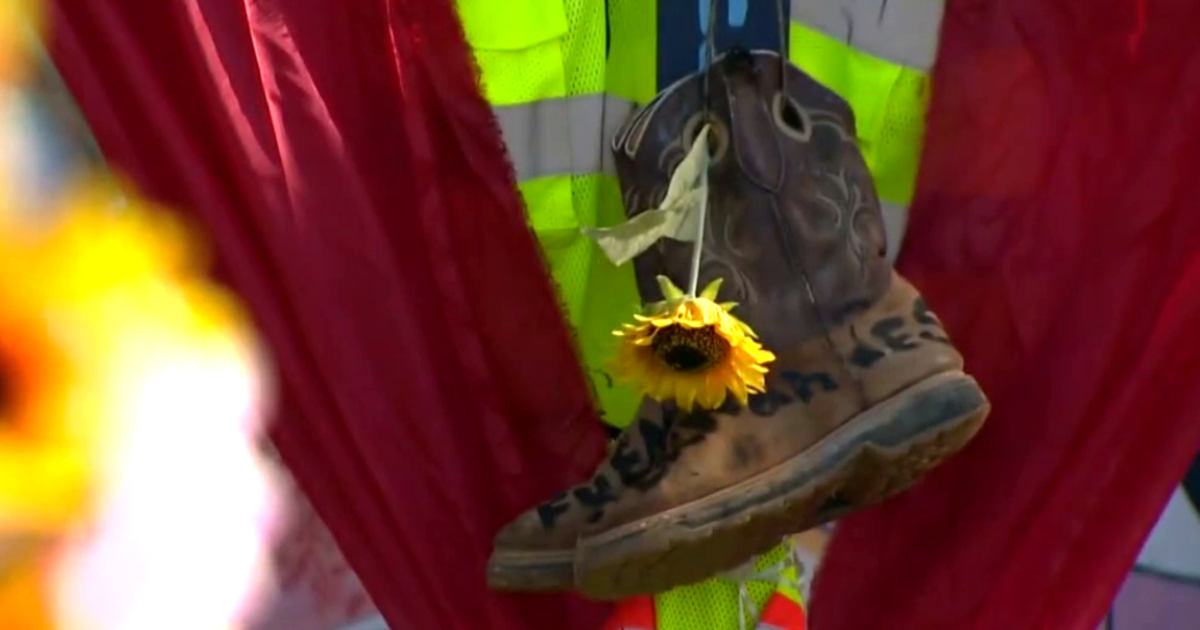How to travel around the Francis Scott Key Bridge collapse in Baltimore: A look at the traffic impact and alternate routes
BALTIMORE -- The collapse of the Francis Scott Key Bridge in Baltimore early on the morning of March 26 led to a major traffic impact for the region and cut off a major artery into and out of the port city.
Drivers are told to prepare for extra commuting time until further notice.
Alternate routes after Francis Scott Key Bridge collapse
Maryland transit authorities quickly put detours in place for those traveling through Dundalk or the Curtis Bay/Hawkins Point side of the bridge. The estimated 31,000 who travel the bridge every day will need to find a new route for the foreseeable future.
The outer loop I-695 closure shifted to exit 1/Quarantine Road (past the Curtis Creek Drawbridge) to allow for enhanced local traffic access. The outer loop remains closed at Exit 1 (MD 173).
The inner loop of I-695 remains closed at MD 157 (Peninsula Expressway). Additionally, the ramp from Exit 42 (MD 151) to the inner loop of I-695 will be closed. That will be the last exit for drivers.
Alternate routes are I-95 (Fort McHenry Tunnel) or I-895 (Baltimore Harbor Tunnel) for north/south routes.
Commercial vehicles carrying materials that are prohibited in the tunnel crossings, including recreation vehicles carrying propane, should plan on using I-695 (Baltimore Beltway) between Essex and Glen Burnie. This will add significant driving time.
Where is the Francis Scott Key Bridge?
The Key Bridge crosses the Patapsco River, a key waterway that along with the Port of Baltimore serves as a hub for East Coast shipping.
The bridge is the outermost of three toll crossings of Baltimore's Harbor and the final link in Interstate 695, known in the region as the Baltimore Beltway, which links Baltimore and Washington, D.C.
The bridge was built after the Baltimore Harbor Tunnel reached capacity and experienced heavy congestion almost daily, according to the MDTA.
Tractor-trailer inspections
Tractor-trailers that now have clearance to use the tunnels will need to be checked for hazardous materials, which are not permitted in tunnels, and that could further hold up traffic.
The MDTA says vehicles carrying bottled propane gas over 10 pounds per container (maximum of 10 containers), bulk gasoline, explosives, significant amounts of radioactive materials, and other hazardous materials are prohibited from using the Fort McHenry Tunnel (I-95) or the Baltimore Harbor Tunnel (I-895).
Any vehicles transporting hazardous materials should use the western section of I-695 around the tunnels, officials said.




